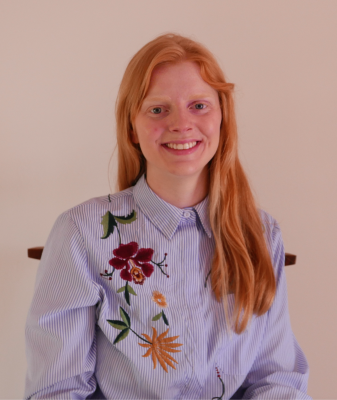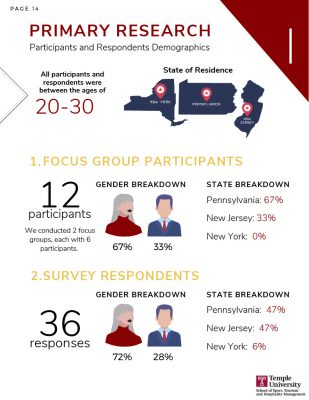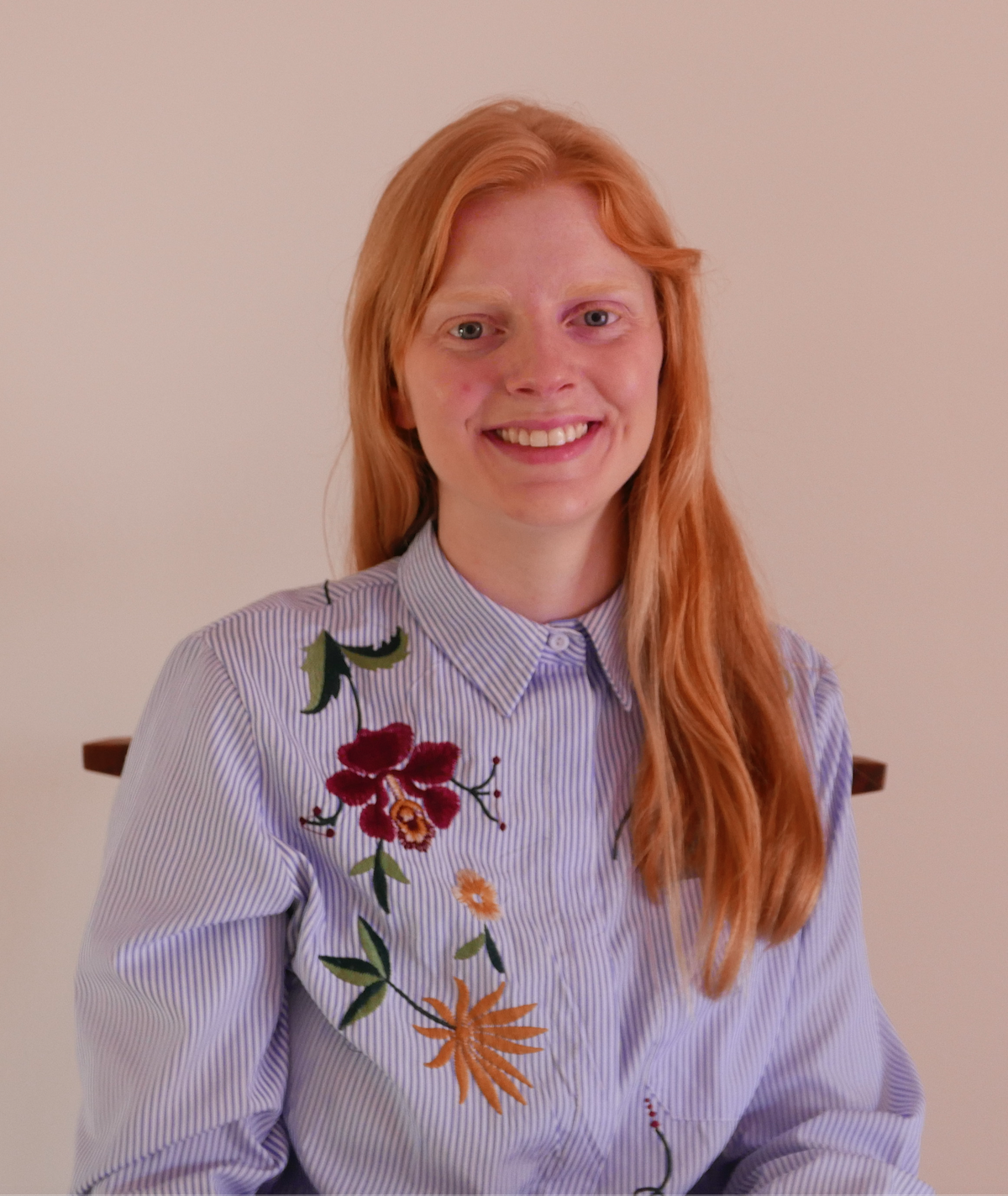
Since the early months of the pandemic, the faculty of the School of Sport, Tourism and Hospitality Management (STHM) has risen to meet the complex challenges facing the tourism and hospitality industries. The “pop-up” Center for Hospitality Resilience translated their industry know-how and research findings into a context that local business owners and managers could readily use. By September 2020, the Center’s Co-Director Dr. Ceridwyn King brought in students taking the capstone class of the Master of Science in Hospitality Management (MSHM) to serve the community by applying their learning to real-world clients.
Every fall semester, hospitality management graduate students work with an industry partner on a consulting project. Over the summer, King devised last fall’s version of the capstone course to be a unique, hands-on learning experience.
“The pandemic provided an opportunity to use the course in addressing an immediate and pressing issue with clients from the Center for Hospitality Resilience,” she says. “At a time when so many businesses were shuttering their doors, we were confident the students would be able to breathe life into initiatives our partners didn’t necessarily have the bandwidth to pursue. The students lived up to our expectations and in many ways exceeded those of their ‘clients’.”

The next level in critical thinking and problem-solving—in service to an industry partner
King fully expected students to not only put their research and analytical skills into practice, but also develop the ability to problem solve, think methodically and present data persuasively. She divided the class into three groups and assigned each one an industry partner from Greater Philadelphia to help them navigate COVID challenges. One partner was the destination Peddler’s Village in Bucks County, PA.
“It was a chance to synthesize all the business information we’d learned from all our courses,” says Clare Robinson MSHM ’21, who was part of the Peddler’s Village team. “We got to see how it all fits together and then bring that knowledge to fruition with a real client in the industry.”
She notes that the class comprised students with a variety of backgrounds and practical experience. “Some, like me, were career changers and others had undergraduate degrees in hospitality marketing,” says the native Texan who came to STHM to transition from her training in fashion design. “Part of the challenge was unifying these different perspectives and ideas to create a balanced, comprehensive deliverable.”
King noticed how daunting the task initially seemed to the students. “Their faculty advisor Dr. Lu Lu and I guided the teams along the way,” she says, “as they learned to tolerate the uncertainty of the fluid and student-led nature of this project—which is quite a departure from the more traditional coursework students are accustomed to doing.”
Drilling down on the client’s needs
Initially, King prepared the students with a short summary of each clients’ needs and objectives. Then, members of each team met virtually with the liaison from their organization. Robinson and her team spoke with Christine Triantos, director of marketing and communications for Peddler’s Village—a destination Robinson had never visited, though it’s only 45 minutes from Philadelphia and, according to Triantos, “attracts as many as tens of thousands of visitors for a weekend event.”
The Village’s colonial-style shopping area near historic New Hope has over 65 shops, boutiques and eating establishments—90 percent of which are locally owned, Triantos says. All of them struggled during the lockdown, despite efforts by the Village’s leadership team in recent years to position it as an outdoor entertainment destination. Robinson and her team quickly learned Triantos was looking for creative solutions to help her support the many sole proprietors in staying afloat.
It turned out that Robinson’s lack of familiarity was representative of one of their marketing challenges. “We learned in our first meeting that the Village wanted to engage younger visitors,” says Robinson. “They needed to capture web and online visitation for 20–30 year olds—and that’s exactly who we ultimately surveyed.” Another goal was to attract people from urban areas who might enjoy coming to a quaint countryside destination, while maintaining the visitation numbers of older (40+) guests.
Next the students dove in, with weeks of primary and secondary research. “We did six kinds of analyses,” Robinson says, “including SWOT, researching competitors and considering external factors—from political and economic to social issues and technology.” Their eight weeks of surveys and focus groups drew largely on friends, family and friends of friends, given the condensed time frame.
Robinson spearheaded research for her team and looked closely into what Gen Z and Millennials are looking for. “We were self-aware in our primary research and recommendations not to just respond to the negative impact of COVID-19, but to think more broadly and ambitiously,” she says.
Meeting marketing objectives with actionable recommendations
In the final weeks of the course, each team poured their insights into detailed, highly professional reports. The 30-pager by the Peddler’s Village team has an executive summary followed by seven sections with extensive footnotes. Impeccably designed by Robinson’s team member Sheeza Qurashi MSHM ’21, it is illustrated with custom infographics and a reference list citing more than 35 sources.
Like each team, Robinson and her colleagues met with the client to share their report and recommendations. Her team then spent 30 minutes answering questions from Triantos, who says she was greatly impressed with the professionalism of both the report and the students.
“They took the project and ran with it,” she says. “What they proposed was spot on for what I was looking for. I have worked with a number of agencies and the quality of this work rivalled many of them.”
In particular, Triantos says, the team offered detailed, actionable suggestions on social content, such as posting more food and drink photos on Instagram and offering unique beverage experiences that Millennials enjoy. “The students emphasized the importance of leaning into new types of media and public relations,” says Triantos. “They even took the time to recommend specific influencers, which had been a challenge for us in the past.”
A student project that led to real-world outcomes
For six months Triantos has taken these marketing and branding recommendations and integrated them into the Village’s strategies, with excellent results. “By May 2021, our retail sales were up from 2019—a remarkable achievement in a pandemic,” she says.
Since implementing the STHM students’ social strategy, the Village’s engagement has climbed substantially on several platforms. Triantos reports that the Facebook following is up from 110.5K in June 2020 to 121K this month (9.5% increase) and Instagram followers went from 24.7K in June 2020 to the current 30.7K (24% increase).
“I couldn’t be more enthusiastic about this collaboration with the STHM students,” Triantos continues, “and would recommend it to any business.” The STHM report positions them to build upon the success recognized in the May 2021 Philadelphia Business Journal—which ranked the Village as the Philadelphia region’s number-one local tourist destination, with 2.25M visitors annually.
A win-win that’s invaluable out-of-classroom experience
King is pleased that the capstone learning experience she designed has been as valuable for the students as it was for their clients. “It’s about the students challenging themselves,” she says, “learning more about themselves and reflecting on how to take this learning into their post-graduation phase.”
She and Lu had the pleasure of observing the students’ skills, maturity and confidence grow in real time. “The boost that the Village team students got when they saw the client’s reaction to the report—that’s irreplaceable,” King says. “That’s not the same as getting an A on your transcript. That’s real-world validation.”
As for Robinson, the experience—and her overall STHM degree—has translated exceptionally well. In April she began working part time for the Travel and Tourism Research Association (TTRA), where she had interned—thanks to a tip from Dr. Xiang (Robert) Li, Chair of the Department of Tourism and Hospitality Management, who sent her the job posting. She is moving to Ohio in August to work full time for Longwoods International, a leading tourism research firm, which she learned about through her STHM internship. Her career change from fashion design to tourism and hospitality has been a success, thanks to this course that helped prepare her for the next phase of her journey.
